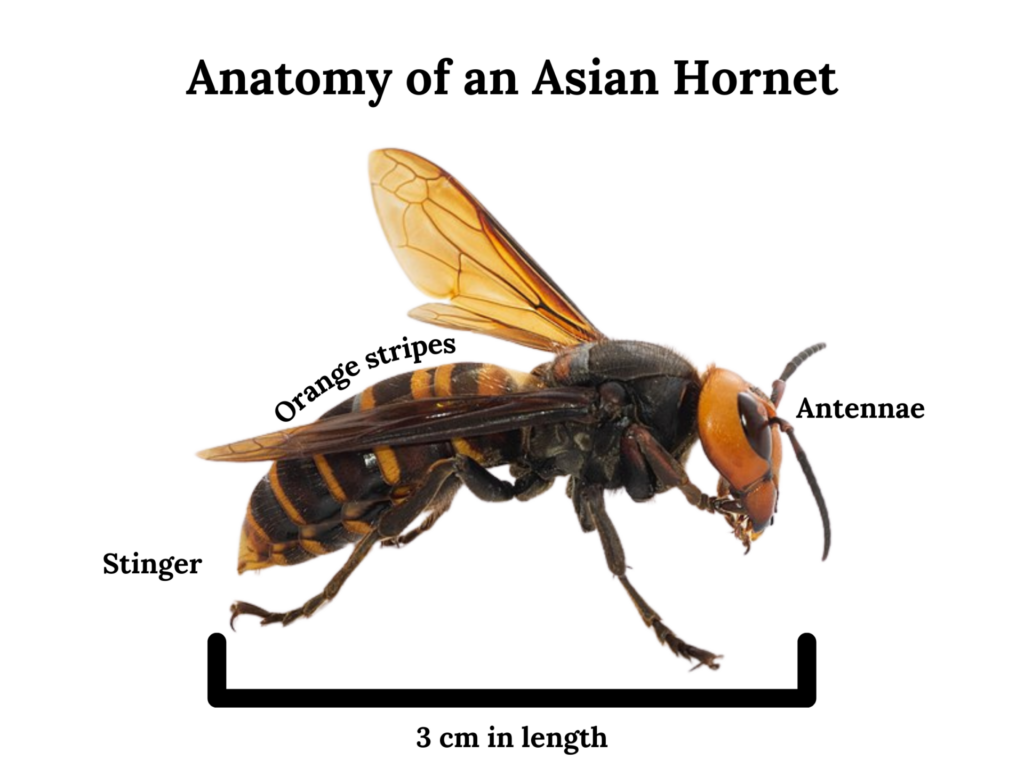Summer means the return of the Asian hornet. The invasive species is back in force at the moment; it attacks bees but also humans.
A pest that does not like to be disturbed and whose bites are very painful, the Asian hornet is easy to recognise. It has a black thorax, an orange stripe on the belly and legs whose ends are coloured bright yellow. It measures up to 3 cm in length.
The sting of the hornet is painful, but in addition, the insect is able to spray a kind of acid at eye level. When approached, the Asian hornet’s defence mechanism alerts the insects which then fly directly to meet the challenge. This can be triggered by getting to within a metre of the hornet’s nest.

Graphic by Abby Stetina for The Brussels Times. Photo credit: Wikimedia
The safest way of removing a nest, should you be unlucky enough to have one in or around your home, is to call an expert. Typically, they will inject a very volatile powder into the nest, which is then dispersed by the insects themselves which will eventually neutralise the colony.
Related News
- Wasp season expected to be particularly bad this summer
- Mosquito outbreak across Europe due to warmer temperatures
You can also call the fire department on the 112 emergency number. It is also advisable to report the nest to the local authorities.
The most important advice from experts is to act quickly. It is important because the primary nest will soon develop another secondary nest which is usually much higher and more difficult to access; on a tree, this can be between 8 and 40 metres high. In addition, this nest will be used, during the winter, to raise a hundred queens. In the spring, each survivor will leave to build a new nest in gardens and the countryside.

